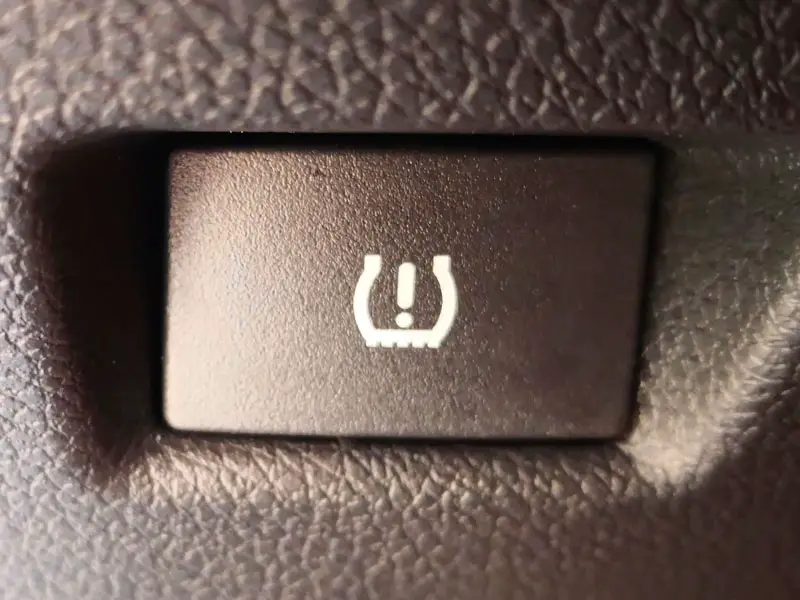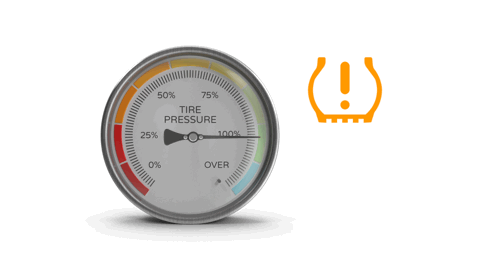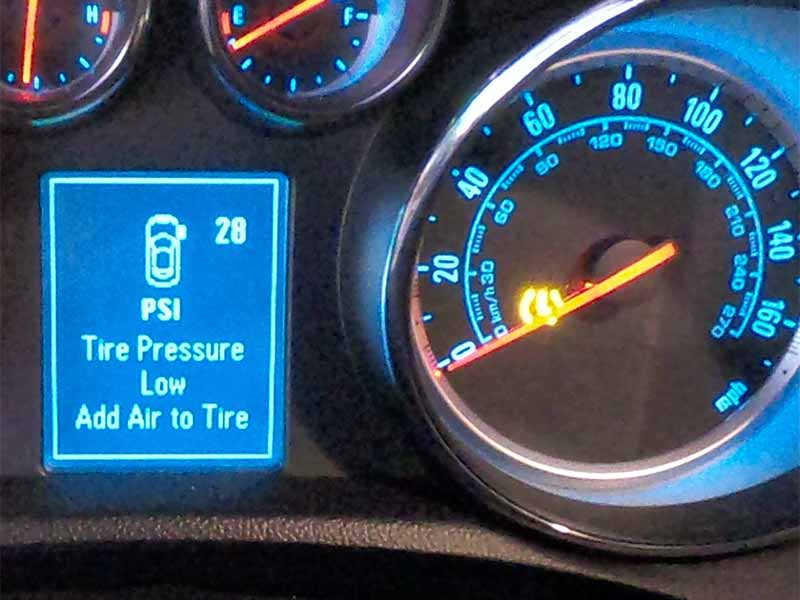You’d think it would be pretty simple to reset the tire pressure monitoring system (TPMS) light on your dashboard. Just make sure the air in each tire is inflated to the correct amount, right?
Unfortunately, it’s not quite that easy. Different vehicle manufacturers have different steps that must be followed, so the best resource is likely going to be your owner’s manual.
But we can provide you with enough info to reset the TPMS light in most cars and trucks.
How To Reset The Tire Pressure Light
- Inflate tires to pressures on the tire information sticker in the driver’s door jamb.
- Turn the ignition key to the “on” position without starting the engine.
- Press and hold the TPMS reset button until the tire pressure light turns off.
- Release the reset button and turn the ignition key to the “off” position.
- Drive for 10 minutes at speeds up to 50 mph to activate sensors and clear error codes.
Every vehicle is different, and most have slightly different methods. Some may not have a TPMS reset button. Others will have a low tire pressure light and a TPMS light.
Let’s take a closer look.
(Common) Steps To Reset The TPMS Light
To reset a tire pressure monitoring system, the following steps can generally be used:
- Check the tire pressure in all four tires and adjust as needed to ensure they are correctly inflated according to the tire information sticker in the driver’s door jamb.
- Locate the reset button for the tire pressure monitoring system. This button is typically located on the dashboard near the vehicle’s steering wheel or center console. However, it can sometimes be found on some makes and models in less common locations, such as the glove box.
- Turn the ignition key to the “on” position without starting the engine. This will activate the tire pressure monitoring system.
- Press and hold the reset button for several seconds until the tire pressure monitoring system resets. The exact time will vary depending on the vehicle make and model, so refer to the owner’s manual for specific instructions.
- You can confirm that the TPMS light has been reset once it is no longer illuminated in the instrument cluster.
- Release the reset button and turn the ignition key to the “off” position.
- Drive your car or truck for 10 minutes at a speed up to 50 miles per hour to activate the tire pressure sensors and allow them time to measure the pressures and clear any error codes in the system.

It is important to note that some vehicles may have slightly different procedures for resetting the tire pressure monitoring system, so it is always best to consult the owner’s manual for specific instructions.
Additionally, if the tire pressure monitoring system is not functioning correctly after being reset, it may be necessary to have it checked by a professional mechanic. The most common cause is dead batteries in one of the pressure sensors.
Malfunctioning TPMS will typically flash the tire pressure light on the dashboard for 60 to 90 seconds immediately after you start your car or truck and then remain lit until the malfunction has been fixed.
Why Is My Tire Pressure Light Still On After Filling My Tires?
The tire pressure light is designed to alert you when the pressure in one or more of your tires is low, so it will remain on until the problem is fixed. If your tire pressure light is still on after filling the tires, it may be because the tire pressure is still not at the recommended level. This can happen if the tire pressure is very low to begin with or if the tire loses pressure again after being filled.

Another reason the tire pressure light may still be on after filling the tires is that the tire pressure monitoring system has not been reset. Most vehicles have a tire pressure monitoring system that uses sensors to monitor the pressure in each tire and alert the driver if the pressure is too low. If the sensors detect a low-pressure condition, the tire pressure light will be illuminated on the dashboard. To reset the system and turn off the light, you must follow the specific reset procedure for your vehicle, which can typically be found in the owner’s manual.
If the tire pressure light is still on after filling the tires and resetting the tire pressure monitoring system, it may be necessary to have the system checked by a professional mechanic to diagnose and fix the problem.
Where Is My TPMS Reset Button?
The location of the TPMS reset button can vary depending on the make and model of your vehicle. In general, the reset button is typically located on the dashboard or center console of the vehicle and is usually marked with the letters “TPMS” or a tire pressure symbol.
[elementor-template id=”4003″]
To find the reset button, you can refer to the owner’s manual for your vehicle, which should have specific instructions on the location of the reset button. Alternatively, you can try looking for the button yourself by searching for a small button or switch on the dashboard or center console marked with the letters “TPMS” or a tire pressure symbol.
If you still need help locating the reset button, you may need to refer to your vehicle owner’s manual to find the reset button on your specific car or truck.
How Do You Reset TPMS If There Is No Button?
When your car or truck doesn’t have a TPMS reset button, you usually need to drive for some time to allow the sensors in all the tires to activate, check the tire pressures, and clear the error codes.
This is common on vehicles with Direct TPMS, a type of tire pressure monitoring system that uses dedicated air pressure sensors in each wheel.
Indirect TPMS uses the antilock braking system’s wheel speed sensors to estimate when a tire has lost pressure. These systems rely on the TPMS reset button to set a baseline for the ABS wheel speed sensors to compare against.
Direct TPMS is becoming the standard as manufacturing has scaled up, and costs have come down for wireless components and sensors. Directly monitoring the air pressure in each tire is more accurate and allows the driver to check the individual tire pressures from the driver’s seat.
Why Is My Tire Pressure Light Blinking?
A blinking tire pressure light may indicate a problem with the TPMS sensors or the TPMS system itself. This could be caused by a faulty sensor, a malfunctioning TPMS control module, or a problem with the vehicle’s electrical system. In some cases, the tire pressure light may start blinking after the TPMS has been reset, which could indicate a problem with the system that needs to be addressed.

If your tire pressure light is blinking, it is important to have the TPMS system checked by a professional mechanic as soon as possible. They will be able to diagnose the problem and fix it, which will help ensure your vehicle’s safe and proper operation.
Resources
Below are some links you may find helpful when learning about tires
- TPMS light on? What it means and what you need to do – Bridgestone
- What is tire pressure monitoring system (TPMS)? – Discount Tire
Final Thoughts
It’s important to pay attention to any warning light on your dashboard. The tire pressure warning light is designed to prevent a catastrophic blowout from driving on tires with too low pressure.
I’ve witnessed more than one car driving on the highway at high speeds with low tire pressure suffer a blowout. One managed not to lose control and make it to the side of the road. The other lost control and totaled their car, smashing into a Jersey wall.
Even if your tire doesn’t blow out, driving on a significantly underinflated tire will ruin it very quickly. This is an expensive mistake.
Good luck and happy motoring.





